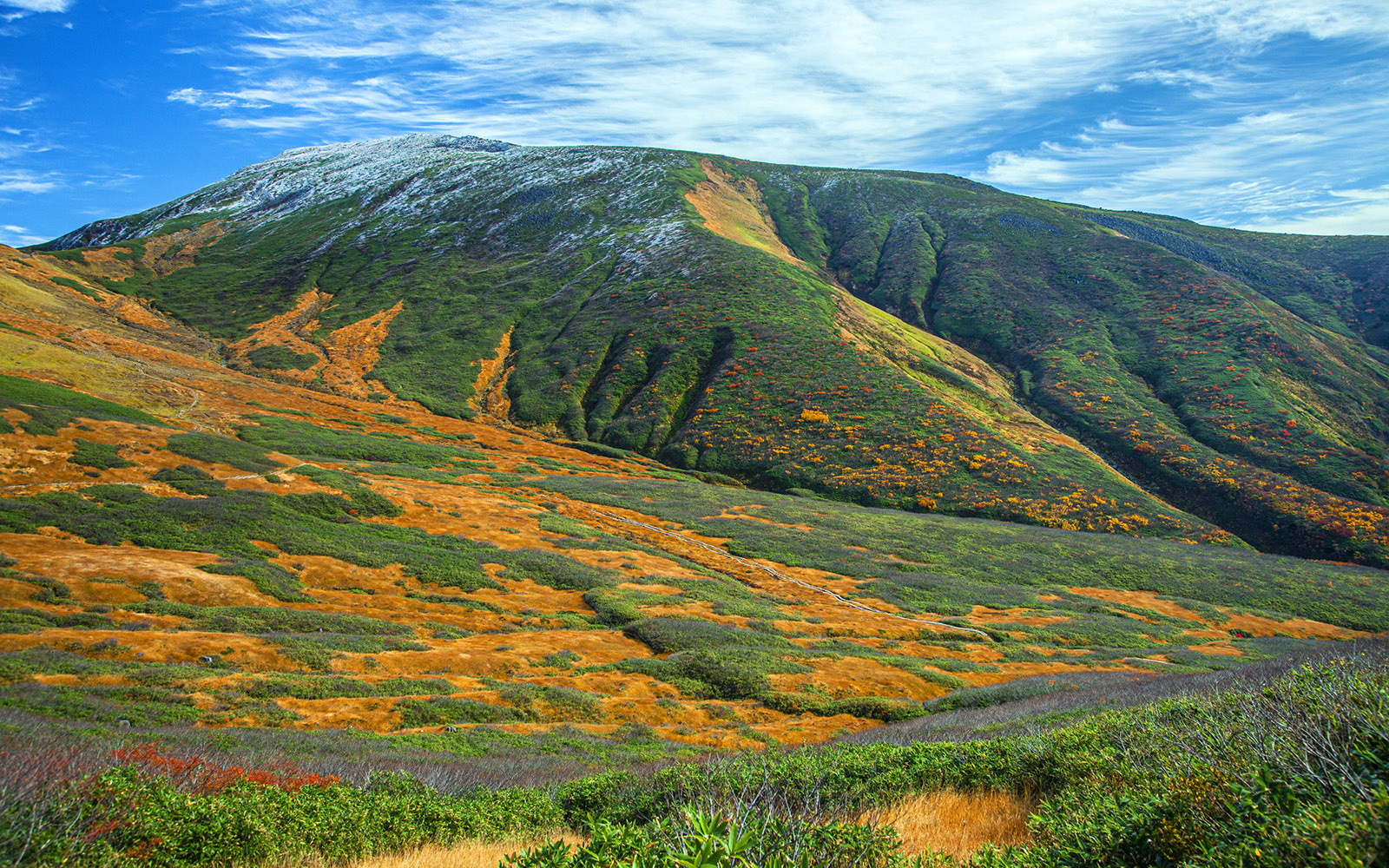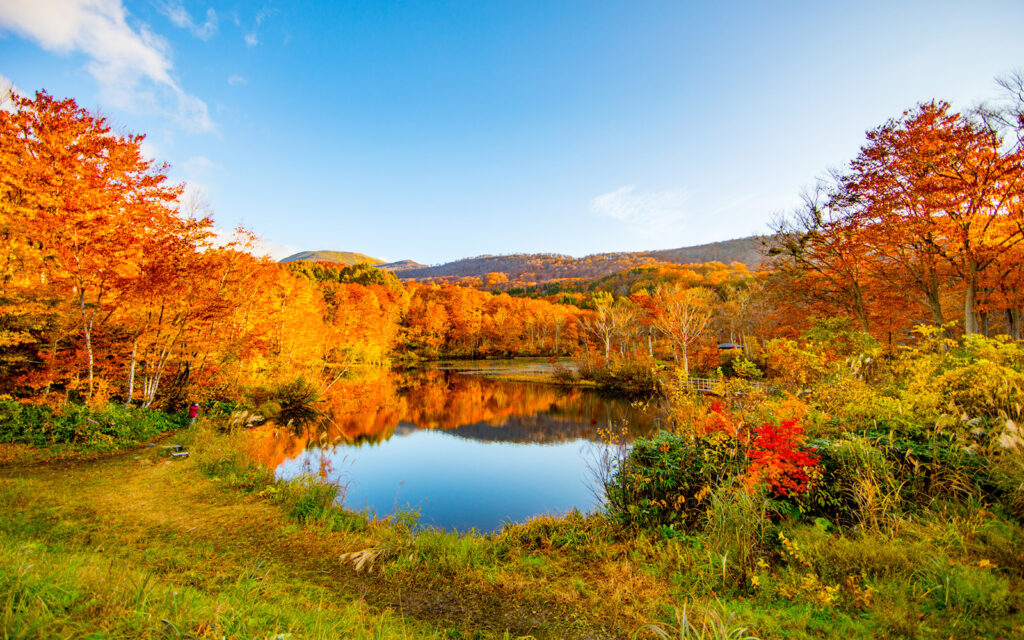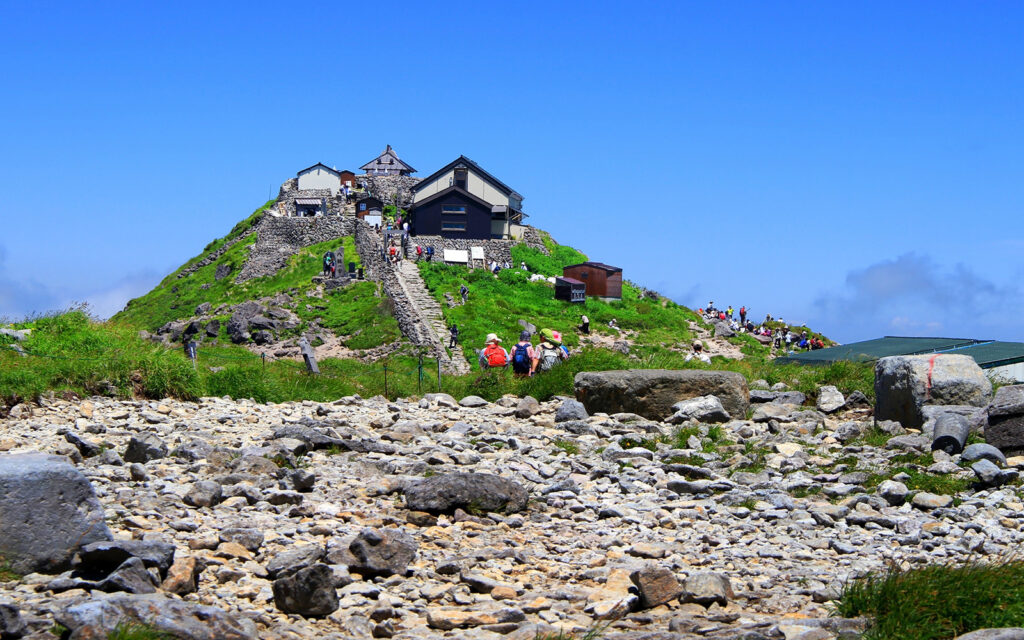Mount Gassan


Mount Gassan is the tallest of the three sacred mountains in Yamagata Prefecture, known as the Three Mountains of Dewa or Dewa Sanzan, which also includes Mount Haguro and Mount Yudono. It stands at 1,984 meters and is also a holy site with deep-rooted history. It is a sacred spot for both the religions of Shinto and Buddhism. Pilgrims have visited Mount Gassan for centuries. Today, it attracts nature lovers and adventure seekers alike.
Mount Gassan
 Photo by: PIXTA/ とーる
Photo by: PIXTA/ とーるThe Sanzan Mountains are particularly notable for having the oldest history of mountain worship in Japan. The mountains were first opened as a religious center more than 1,400 years ago.
From Tsuruoka city, the best way to reach Mount Gassan is by car or bus to the 8th station (Hachigome). The hiking routes start from there on Mount Gassan and are accessible to everyone.
Not only as a sacred mountain, Mount Gassan has also been chosen as one of Japan’s 100 best mountains for flowers. From June to July, the area bursts with colorful, rare wildflowers such as black lilies and Japanese spatterdock. Many people visit, especially in autumn when the foliage turns vibrant colors.
Autumn Hiking
 Photo by: PIXTA/ rara
Photo by: PIXTA/ raraThe journey begins at the Ubasawa Trailhead, serving as the starting point for Mount Gassan. This area features golden beech trees in early October. A one-hour hike from Ubasawa to Ushikubi resting spot allows you to soak in the fall colors. Rain often makes the leaves brighter, highlighting beautiful shrubs like mountain cherry and rowan along the ridgeline. Midagahara Marsh, located at an elevation of 1,400 meters, features a serene boardwalk trail that winds through beautiful alpine wetlands. Late September features the striking Japanese pampas grass of Midagahara Marsh. At the 9th station of the mountain, Jizo Pond appears, believed to hold a statue of Jizo-sama, the guardian deity of travelers. The vibrant red maples appear by mid-October, creating a breathtaking view of the spot.
Finally reaching the summit, the surrounding alpine ridges and wetlands are ablaze with autumnal reds, golds, and oranges. There are sweeping views of the Shonai Plain, Mount Chokai to the north, the Asahi Mountains to the south and even the Sea of Japan on a clear day. Also, you can visit the Gassan Shrine, which is one of the three sacred shrines of the Dewa Sanzan.
To enjoy Mount Gassan’s autumn foliage without crowds, visit on a weekday or during early morning or evening hours. Accommodation in local hot spring resorts like Gassan Shizu Onsen and Hijiori Onsen fills up quickly during the autumn season.






